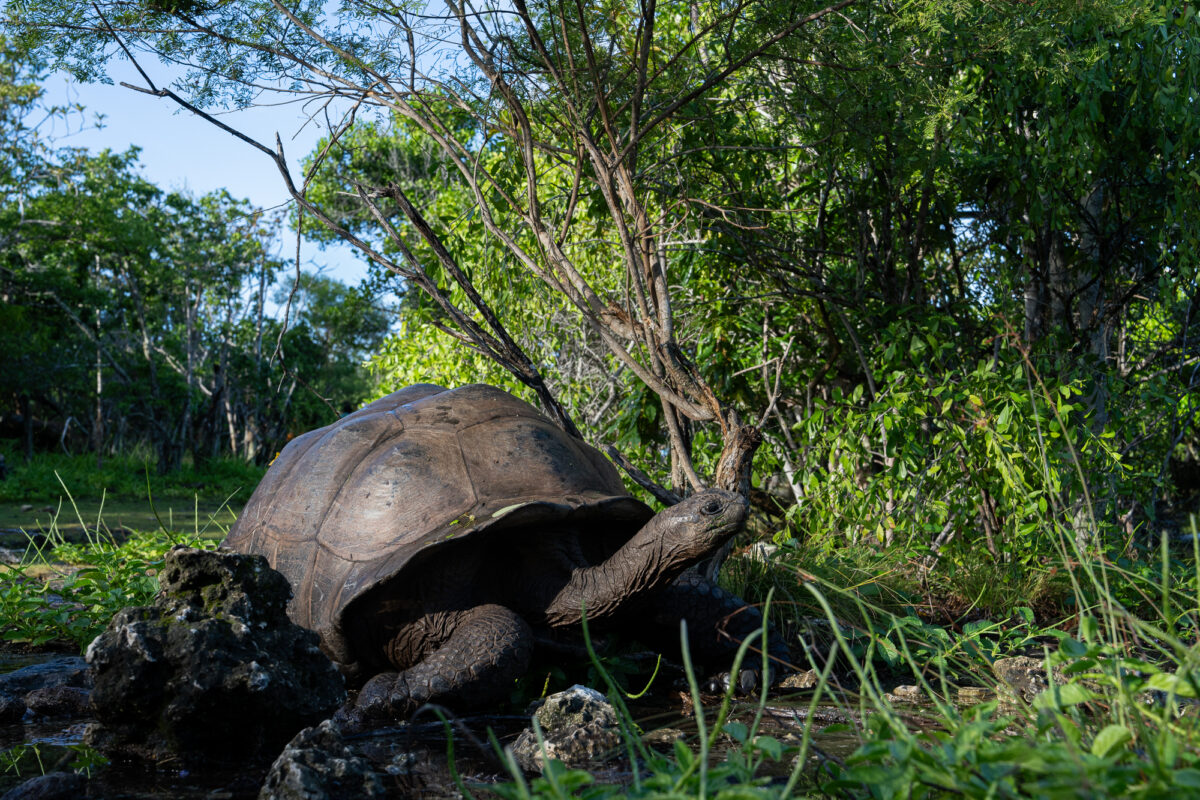- Using spectroscopy, scientists can identify species during fieldwork, without the need for lengthy and costly analyses such as genetic testing or bioacoustics.
- Studies show a reliability rate of 80%, with practitioners looking to expand the reference database and provide information that’s crucial for monitoring biodiversity and combating the illegal wildlife trade, among other uses.
- Experts highlight the low cost and practicality of the equipment if improved methods are designed to create new solutions for conservation in areas with a wide variety of fauna, such as the Amazon.
The experience of watching your groceries slide across a supermarket checkout counter is almost universal. In this everyday process, an electronic device scans the barcode and identifies each product. There’s a technical explanation behind the “beep”: the eyes can’t see it, but the device emits a beam of electromagnetic waves that measures the amount of light reflected back by the item. This signature is unique to each item, allowing us to tell them apart.
Known as near-infrared spectroscopy (NIR), the technology is also used to analyze samples of different materials and has many applications: for quality control in agriculture, or for monitoring blood oxygen levels in the medical field. Would it be possible, then, to reproduce this common scanning practice to identify species in tropical forests, such as the Amazon?
Science has the answer.
As the sun sets, the dense green area of the Mamirauá Sustainable Development Reserve in Brazil’s Amazonas state darkens in the blink of an eye. With the disappearing of the light comes the buzzing of carapanãs, as the various species of mosquitoes are called in this region. The noise accompanies Kelly Torralvo, a senior researcher in the Terrestrial Vertebrates Ecology Research Group at the Mamirauá Institute. Walking slowly along a trail with her flashlight, she searches for reptiles and amphibians among branches and leaves. She collects the animals and takes them back to the laboratory at the field base located in the reserve.
There, with the help of a device that uses NIR technology, researchers “scan” each animal with a sensor that detects its “spectral signature.” Because it works like a fingerprint of infrared light, this mark is unique to each species. Through this procedure, it’s possible to identify each animal found in field searches, generating data that’s crucial for monitoring the herpetofauna, or reptiles and amphibians, that live in the protected area.

For an animal to be identified by this method, a preliminary step must be taken. As in industry or in a supermarket, the scanning must be linked to a reference database — in this case, containing the data on each species’ spectral signatures. The largest possible number of animals must be scanned to feed the database. A challenge then arises: although it’s possible to study animals that are part of biological collections of museums and research institutions, the demand is different when it involves animals observed in the wild, in which case data collection must be done while they’re still alive.
This is Torralvo’s goal. She has always worked with herpetofauna throughout her career. Experience is an ally in her efforts to collect data on this group, whose members are important bioindicators.
“The NIR tool is an advance in laboratory and field activities, combining the knowledge of biodiversity experts with available technology,” Torralvo tells Mongabay. “By assisting in species recognition, this method can facilitate processes in countless activities related to academic studies, monitoring, inspections, and management and conservation actions. [Also] in places where there is no expert to perform recognition. This tool can impact countless spheres of activity.”
Research shows promising results: according to a 2023 study that Torralvo co-authored in the Journal of Near Infrared Spectroscopy, with just one spectral reading, NIR technology identified five of the eight amphibian species tested, with a reliability of 80%; one of the species was correctly identified in 92% of cases. The authors say increasing the reference database and refining the devices used can increase reliability.

Practical applications for conservation
Identifying wild game meat is also within the scope of NIR technology, based on the development of new tracking models. According to Torralvo, this approach also plays a crucial role in the fight for nature. “For example, the meat of an endangered animal might be mixed with another species to make it difficult to identify it during inspections. By reading samples of fresh, salted or frozen game meat — the main conditions in which they are found — it’s possible to know what was killed. This makes NIR a potentially useful tool for monitoring illegal trade,” she says. This approach can be used to combat wildlife trafficking, the identification of which may influence the fine to be applied.
“NIR is a revolutionary technology,” says Pedro Pequeno, an ecologist and a researcher at the National Institute of Science and Technology in Syntheses of Amazonian Biodiversity (INCT-Sinbiam). “The method is already widely used in other areas such as chemistry, but I believe it has huge potential for application in biology. Species identification usually requires an expert, which is complicated in the case of amphibians, since many of these animals are extremely similar in physical terms. Genetic tests can be performed to identify them, but they are very expensive. An alternative is to recognize them by their sounds — known as bioacoustics — but that requires a lot of work and training. With NIR, it’s almost like magic! With a calibrated database, all you have to do is pass the light beam through it and, voilà: the species is recognized.”

Scientists say the sky’s the limit when it comes to the future benefits of the technology.
“I believe that [the use of] NIR can go further, because spectral signature reading provides a lot of information that, in theory, can be accessed,” Pequeno says. “For example: it’s possible to measure the chemical composition of a living being, evaluating the amount of a stress hormone or the concentration of mercury in its tissue. Maybe even its geographic origin, which can determine whether a fish came from a management area or from illegal trade.”
This optimism is tinged with the challenge of creating a representative reference database, especially when considering the biological diversity found in the Amazon. Even so, Torralvo says all the efforts are worth it.
“The method is very promising because it involves portable and relatively low-cost equipment. The potential applications of NIR in inspections and monitoring of biodiversity are countless, and this horizon of possibilities tends to be expanded even further. The improvement of this technology will be an important step towards more efficient and reliable decisions.”
Banner image: Species of amphibian found during a survey in the Mamirauá reserve. Image courtesy of Miguel Monteiro.
This story was first published here in Portuguese on June 23, 2025.
Citation:
Torralvo, K., Durgante, F., Pasquini, C., & Magnusson, W. E. (2023). Near infrared spectroscopy for the identification of live anurans: Towards rapid and automated identification of species in the field. Journal of Near Infrared Spectroscopy, 31(2), 80-88. doi:10.1177/09670335231156472





lqapa4